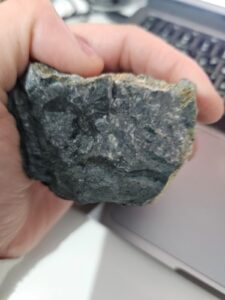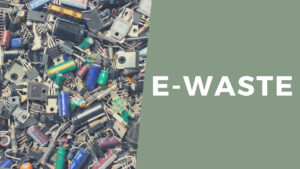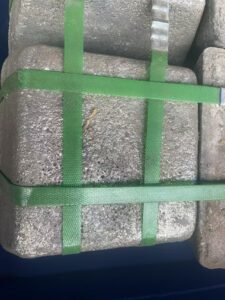With green economies always more attractive, particularly in the current geopolitical climate in which there is now more desire to adhere to a circular economy, that Mineworx is already a global leader in its innovative cleantech, bodes very well for the company’s future.
Mineworx President and CEO Greg Pendura has more than 35 years of experience, including public market experience, and a multitude of success. CFO Don Weatherbee has extensive leadership experience, including 20 years at the executive level. Executive director Rick Purdy has vast entrepreneurial experience, including over 15 years of experience in real estate development, land acquisition, and business development consulting. Director of R&D Fabricio Maia has an MBA and a Masters in Applied Science in Mining and Mineral Processing. He also has over 18 years of experience in the mining industry, including in project management of e-waste leach gold plant projects.

This management team is exceptionally strong from a business perspective and is certainly well-geared to take the company to the next level.
Even without the impressive and innovative cleantech, the brilliance of the business model should grab investors’ attention. The company produces an extremely high-yield extraction of precious metals from diesel catalytic converters with a perfectly cleantech, innovative method. Take into account that every year, 85% of the world’s supply of palladium and 50% of the world’s supply of platinum are used for the development of catalytic converters.
With its proprietary innovation, Mineworx is extracting platinum and palladium with >90% projected yield. Around 12,600,000 ounces of platinum and palladium are required every year, for the manufacture of catalytic converters. The market potential is clearly astounding.
Notwithstanding the electric car industry’s expected growth, diesel catalytic converters will without a doubt be needed for the forseeable future – automotive and non-automotive. In particular, heavy-duty vehicles, stationary engines and machinery and such categories will always need catalytic converters.
In January of this year, Mineworx announced the sale of its Cehegin iron ore asset in Spain. Instead of being diversified, the sale of the asset would allow the company to be focused and will see it transition from a resource issuer to a technology issuer on the TSX Venture Exchange. This is a solid and focused move.
Greg Pendura stated, “We are excited to announce this transaction as we feel it provides great current value to our shareholders who also get to participate in the future development of the Cehegin property while Mineworx will be focused on commercializing its CleanTech in the catalytic converter market. We believe the management of “NewCo” will bring great value and expertise in further monetizing the Cehegin asset moving forward.”
The Mineworx timeline
Mineworx recently held an operations update webinar, the primary purpose of which was to introduce their partnered Iron Bull Mining team (the company set to purchase the Cegehin iron ore asset) and provide corporate updates to shareholders. In this webinar it was discussed that the company’s pilot plant operation was moved from Vancouver, Canada to Tennessee, United States has now verified the technology concept, and is successfully optimizing the overall system for commercialization. The goals for which the company planned vis-à-vis the pilot plant are all on track, and as the company is launching a rebrand and rename, it is at the beginning of an exciting time indeed.
Once they have completed this phase of this pilot plant, the design of the ‘10 ton per day’ commercial plant can begin to be finalized. After this, they shall begin the construction and assembly phase of the commercial facility.
Why the catalytic converter industry is so exciting
Within the trucking industry, the light truck, off-road truck and commercial trucking segments are expected to grow to $73 billion USD by the year 2025.
From 2006 onwards, more stringent environmental regulations have resulted in increased use of Platinum Group Metals (PGMs) in the diesel catalytic converter development process. It also means that other materials, such as silicone carbide, have become problematic for use in smelters, which were previously the only viable solution for the extraction of platinum and palladium from diesel converters, and which are heavy on the environment to say the least.
This means more PGMs per diesel converter, but increased difficulty in processing and extraction. Given that the average life-cycle of diesel converters is approximately 10 years, more are currently becoming available but with less options for recycling.
This is not the only industry inadvertently supplying excess diesel converters. Within the industrial yellow iron industry, including such categories as heavy industrial construction equipment, every type of generator, marine equipment and stationary engines, all new non-road diesel engines sold since 2015 require catalytic converters, and the life-cycle of these is approximately only 3 years.
A third supply market is industrial facilities – the plants themselves. Industrial plants include manufacturing plants, oil and gas plants, chemical plants, power plants and such facilities. Basically, any plant where a converter used, is potential stock.
Clearly there is no shortage of stock, and indeed it is stock which will have not many other options but to become harmful waste.
The proposed commercial plant in numbers
Every single year, 27 million catalytic converters reach their end of life and approximately only 30% are recycled. According to the company, Diesel Particulate Filters (DPF’s) will grow from a $25 billion USD market in 2017 to a $40 billion USD market by 2025. That is an astonishing increase of 60%.
Looking at the palladium market alone – an incredible 85% of the world’s supply of palladium goes into catalytic converter production every year. In North America alone this is over 2 million ounces. At the current palladium price of around $2300/oz. it equates to about $5 billion USD. Given that only 30% is recycled, it means that this is a staggering $3.5 billion USD loss of palladium alone.
Mineworx is set to have its unique cleantech innovation be an astonishing game-changer, one which drastically reduces the amount of harmful waste going into the earth. It is of course a positive thing when companies get their carbon-footprint-reduction points, donate to green non-profit organizations and undertake such important endeavours as recycling, for example, but those rare companies whose innovation actually improves the environment while creating wealth for all involved, are truly amazing.
With the anticipation for the readiness for the commercial plant and the name change and rebranding said to shortly be announced, it’s clear that things are being shaken up and sharpened. The new Mineworx will be a company to watch.






